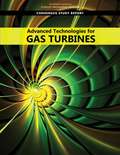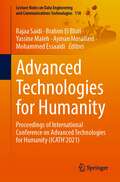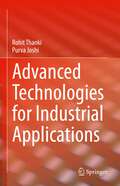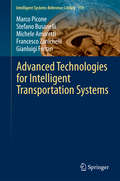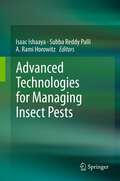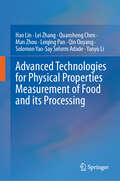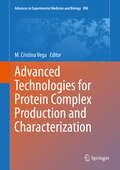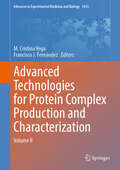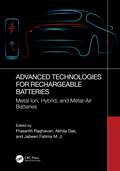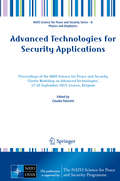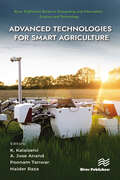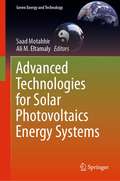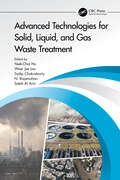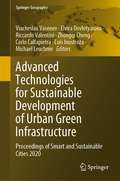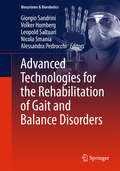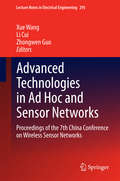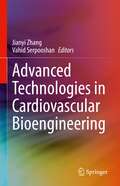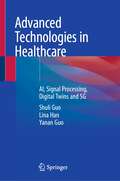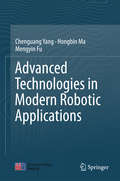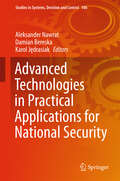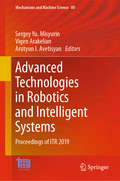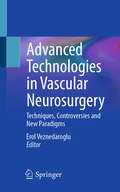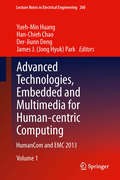- Table View
- List View
Advanced Technologies for Gas Turbines
by Engineering Medicine National Academies of SciencesLeadership in gas turbine technologies is of continuing importance as the value of gas turbine production is projected to grow substantially by 2030 and beyond. Power generation, aviation, and the oil and gas industries rely on advanced technologies for gas turbines. Market trends including world demographics, energy security and resilience, decarbonization, and customer profiles are rapidly changing and influencing the future of these industries and gas turbine technologies. Technology trends that define the technological environment in which gas turbine research and development will take place are also changing - including inexpensive, large scale computational capabilities, highly autonomous systems, additive manufacturing, and cybersecurity. It is important to evaluate how these changes influence the gas turbine industry and how to manage these changes moving forward. Advanced Technologies for Gas Turbines identifies high-priority opportunities for improving and creating advanced technologies that can be introduced into the design and manufacture of gas turbines to enhance their performance. The goals of this report are to assess the 2030 gas turbine global landscape via analysis of global leadership, market trends, and technology trends that impact gas turbine applications, develop a prioritization process, define high-priority research goals, identify high-priority research areas and topics to achieve the specified goals, and direct future research. Findings and recommendations from this report are important in guiding research within the gas turbine industry and advancing electrical power generation, commercial and military aviation, and oil and gas production.
Advanced Technologies for Humanity: Proceedings of International Conference on Advanced Technologies for Humanity (ICATH'2021) (Lecture Notes on Data Engineering and Communications Technologies #110)
by Mohammed Essaaidi Yassine Maleh Rajaa Saidi Brahim El Bhiri Ayman MosallamThis book gathers the proceedings of the International Conference on Advanced Technologies for Humanity (ICATH’2021), held on November 26-27, 2021, in INSEA, Rabat, Morocco. ICATH’2021 was jointly co-organized by the National Institute of Statistics and Applied Economics (INSEA) in collaboration with the Moroccan School of Engineering Sciences (EMSI), the Hassan II Institute of Agronomy and Veterinary Medicine (IAV-Hassan II), the National Institute of Posts and Telecommunications (INPT), the National School of Mineral Industry (ENSMR), the Faculty of Sciences of Rabat (UM5-FSR), the National School of Applied Sciences of Kenitra (ENSAK) and the Future University in Egypt (FUE).ICATH’2021 was devoted to practical models and industrial applications related to advanced technologies for Humanity. It was considered as a meeting point for researchers and practitioners to enable the implementation of advanced information technologies into various industries. This book is helpful for PhD students as well as researchers.The 48 full papers were carefully reviewed and selected from 105 submissions. The papers presented in the volume are organized in topical sections on synergies between (i) smart and sustainable cities, (ii) communication systems, signal and image processing for humanity, (iii) cybersecurity, database and language processing for human applications, (iV) renewable and sustainable energies, (V) civil engineering and structures for sustainable constructions, (Vi) materials and smart buildings and (Vii) Industry 4.0 for smart factories.All contributions were subject to a double-blind review. The review process was highly competitive. We had to review 105 submissions from 12 countries. A team of over 100 program committee members and reviewers did this terrific job. Our special thanks go to all of them.
Advanced Technologies for Industrial Applications
by Rohit Thanki Purva JoshiThis book provides information on advanced communication technology used in Industry 4.0 and 5.0. The book covers a variety of technologies such as signal processing, system designing, computer vision, and artificial intelligence and explains their benefits, usage, and market values in Industry 4.0 and 5.0. The authors present technological tools for industrial applications and give examples of their usage of system design, modeling, artificial intelligence, internet of things and robotics. This book covers the impact of these technologies in various industrial applications and provides future technological tools that will be helpful in future planning and development. The book is pertinent to researchers, academics, professionals, planners, and student’s interest in Industry 5.0.
Advanced Technologies for Intelligent Transportation Systems (Intelligent Systems Reference Library #139)
by Gianluigi Ferrari Marco Picone Stefano Busanelli Michele Amoretti Francesco ZanichelliThis book focuses on emerging technologies in the field of Intelligent Transportation Systems (ITSs) namely efficient information dissemination between vehicles, infrastructures, pedestrians and public transportation systems. It covers the state-of-the-art of Vehicular Ad-hoc Networks (VANETs), with centralized and decentralized (Peer-to-Peer) communication architectures, considering several application scenarios. With a detailed treatment of emerging communication paradigms, including cross networking and distributed algorithms. Unlike most of the existing books, this book presents a multi-layer overview of information dissemination systems, from lower layers (MAC) to high layers (applications). All those aspects are investigated considering the use of mobile devices, such as smartphones/tablets and embedded systems, i. e. technologies that during last years completely changed the current market, the user expectations, and communication networks. The presented networking paradigms are supported and validated by means of extensive simulative analysis and real field deployments in different application scenarios. This book represents a reference for professional technologist, postgraduates and researchers in the area of Intelligent Transportation Systems (ITSs), wireless communication and distributed systems.
Advanced Technologies for Managing Insect Pests
by Isaac Ishaaya A. Rami Horowitz Subba Reddy PalliAmong the highlights of this book is the use of novel insecticides acting on a specific site in an insect group and are compatible with natural enemies and the environment. One of such approaches is based on disrupting the activity of biochemical sites acting on transcription factors such as the Helix-Loop-Helix (bHLH) family, anti juvenile hormone (AJH) agents that target JH biosynthetic enzymes, G-protein coupled receptors (GPCR) and bursicon as a target for insect control. Another one is the biotechnology or the genetic approach such as gene silencing (RNA interference) and Bt-crops. Other sections of the book are devoted to the plant's natural products, optical manipulation and the use of nanotechnology for improving insect control methods.
Advanced Technologies for Meat Processing (Food Science and Technology)
by Fidel Toldrá Leo M. NolletAs with the first edition, the main goal of Advanced Technologies for Meat Processing is to provide the reader with recent developments in new advanced technologies for the full meat- processing chain. This book is written by distinguished international contributors with recognized expertise and excellent reputations, and brings together all the advances in a wide and varied number of technologies that are applied in different stages of meat processing. This second edition contains 21 chapters, combining updated and revised versions of several chapters with entirely new chapters that deal with new online monitoring techniques like hyperspectral imaging and Raman spectroscopy, the use of nanotechnology for sensor devices or new packaging materials and the application of omics technologies like nutrigenomics and proteomics for meat quality and nutrition. The book starts with the control and traceability of genetically modified farm animals, followed by four chapters reporting the use of online non-destructive monitoring techniques like hyperspectral imaging and Raman spectroscopy, real-time PCR for pathogens detection, and nanotechnology-based sensors. Then, five chapters describe different advanced technologies for meat decontamination, such as irradiation, hydrostatic and hydrodynamic pressure processing, other non-thermal technologies, and the reduction in contaminants generation. Nutrigenomics in animal nutrition and production is the object of a chapter that is followed by five chapters dealing with nutritional-related issues like bioactive peptides, functional meats, fat and salt reduction, processing of nitrite-free products, and the use of proteomics for the improved processing of dry-cured meats. The last four chapters are reporting the latest developments in bacteriocins against meat-borne pathogens, the functionality of bacterial starters, modified atmosphere packaging and the use of new nanotechnology-based materials for intelligent and edible packaging.
Advanced Technologies for Physical Properties Measurement of Food and its Processing
by Lei Zhang Quansheng Chen Hao Lin Man Zhou Leiqing Pan Qin Ouyang Solomon Yao-Say Adade Yanyu LiThis book provides a comprehensive overview of the physical properties of foods and the cutting-edge technologies employed to measure them. Delving into key topics such as optical, thermal, acoustic, rheological, and textural properties, it provides a detailed examination of principles, measurement methods, and applications in food quality evaluation. While it discusses advanced technologies such as near-infrared spectroscopy, computer vision, spectral imaging, acoustic resonance analysis, electronic noses/tongues/eyes, and multi-sensor data fusion in detail, the book also introduces intelligent equipment design and real-time quality monitoring systems for the food industry, including emerging technologies like 4D printing and terahertz technology. The book also addresses critical questions about the application of these technologies in real-world scenarios, making it a must-read for those seeking to understand and apply the latest advancements in food science. This book is an invaluable resource for undergraduate and graduate students, researchers, and professionals in food science and engineering. It helps readers understand the principles of various non-destructive food quality measurement techniques and applies them to in-situ evaluation and in-field monitoring. It also serves as both a textbook and a reference guide, enabling readers to understand and apply advanced measurement and processing techniques for in-situ evaluation and in-field monitoring. By providing a thorough understanding of the principles and applications of food physical properties, this book ensures that its audience remains at the forefront of technological advancements in the field. The book contains several chapters originally written in the Chinese language. The translation was done with the help of artificial intelligence. A subsequent human revision was done primarily in terms of content.
Advanced Technologies for Protein Complex Production and Characterization (Advances in Experimental Medicine and Biology #896)
by M. Cristina VegaThis book presents advanced expression technologies for the production of protein complexes. Since complexes lie at the heart of modern biology, the expression, purification, and characterization of large amounts of high-quality protein complexes is crucial for the fields of biomedicine, biotechnology, and structural biology. From co-expression in E. coli, yeast, mammalian and insect cells to complex reconstitution from individual subunits, this book offers useful insights and guidance for successful protein expressionists. Across several sections readers will discover existing opportunities for the production of protein complexes in bacterial systems (including membrane proteins and cell-free co-expression), methylotrophic and non-methylotrophic yeasts, protozoa (Leishmania terantolae and Dictyostelium discoideum), baculovirus-infected insect cells, mammalian cells, plants and algae. Complex reconstitution from individually purified subunits or subcomplexes is discussed as a complementary strategy. A last section introduces briefly some of the biophysical and structural characterization techniques for macromolecular complexes using state-of-the-art solution scattering and nuclear magnetic resonance. This work is a guided tour over some of the most powerful and successful protein expression technologies, with a focus on co-expression and high-throughput applications. It is addressed to everyone interested in the production and characterization of macromolecular complexes, from university students who want an accessible description of the major co-expression systems to researchers in biomedicine and the life sciences seeking for an up-to-date survey of available technologies.
Advanced Technologies for Protein Complex Production and Characterization: Volume II (Advances in Experimental Medicine and Biology #1453)
by M. Cristina Vega Francisco J. FernándezThis edited volume discusses the identification, discovery, characterization, structure determination and modeling of multicomponent macromolecular complexes, and as such, it fully complements the first volume (ISBN 978-3-319-27214-6), which targeted methods of recombinant production of protein complexes. This book is divided in 8 sections offering a selection of technologies widely used in the characterization of protein and protein-nucleic acid complexes for different purposes and at different scales. From native electrophoresis methods, that are accessible to any reasonably well-equipped laboratory, to the sophisticated setup required for structure determination by cryo-electron microscopy or X-ray crystallography, this book contains a wide variety of clearly explained analytic and preparative approaches, connected with the production techniques developed on the previous volume. The readers will find an integral connection between this book and the first volume, which ensures a comprehensive and updated discussion of the main topics of the discipline. Taken together, these volumes constitute a cohesive and authoritative source of the research on multicomponent macromolecular complexes. In here, we focus on characterization of protein complexes in the broadest sense, which is not typically covered in other sources. Moreover, all chapters are carefully written by world renowned scientists and active researchers, making this volume ideal, not only as a reference source, but also as a companion book for the daily laboratory work. This book is aimed for a wide range of scientists, from science students to experienced researchers, working on protein and protein-nucleic acid complexes, who need a thorough understanding of protein production and complex characterization.
Advanced Technologies for Rechargeable Batteries: Alkaline Metal Ion, Redox Flow, and Metal Sulfur Batteries
by Prasanth Raghavan Jabeen Fatima Akhila DasThis volume focuses on alkaline metal-ion, redox flow, and metal sulfur batteries and provides details about the various kinds of advanced rechargeable batteries. It explains magnesium-ion batteries, sodium-ion batteries, metal sulfur batteries, and redox flow batteries with an introduction to rechargeable batteries and major upcoming batteries (magnesium-/sodium-ion batteries). Various kinds of redox flow batteries from introduction extending to the recent progress in redox flow batteries have been extensively discussed.Features: Covers recent battery technologies in detail, from chemistry to advances in post-lithium-ion batteries. Reviews magnesium-ion batteries, sodium-ion batteries, metal sulfur batteries, and redox flow batteries. Explains various metal sulfur batteries. Explores different types of redox flow batteries for large-scale energy storage application. Provides authoritative coverage of scientific contents via global contributing experts. This book is aimed at graduate students, researchers, and professionals in materials science, chemical and electrical engineering, and electrochemistry.
Advanced Technologies for Rechargeable Batteries: Metal Ion, Hybrid, and Metal-Air Batteries
by Prasanth Raghavan Akhila Das Jabeen Fatima M. J.This volume covers recent advanced battery systems such as metal-ion, hybrid, and metal-air batteries. It includes an introduction to fluoride, potassium, zinc, chloride, aluminium, and iron-ion batteries; special or hybrid batteries are included, with calcium, nuclear, thermal, and lithium-magnesium hybrid batteries also explained. It summarizes the recent progress and chemistry behind the popular metal-air batteries, including a systematic overview of the components, design, and integration of these new battery technologies.Features: Covers recent battery technologies in detail, from the chemistry to advances in post-lithium-ion batteries. Various post-lithium-ion batteries are discussed in detail. Includes a section on ion batteries, exploring new types of metal-ion batteries. Focuses in each chapter on a particular battery type, including different metal-ion batteries such as zinc, potassium, aluminium, and their air version batteries. Provides authoritative coverage of scientific content via global contributing experts. This book is aimed at graduate students, researchers, and professionals in materials science, chemical and electrical engineering, and electrochemistry.
Advanced Technologies for Security Applications: Proceedings of the NATO Science for Peace and Security 'Cluster Workshop on Advanced Technologies', 17-18 September 2019, Leuven, Belgium (NATO Science for Peace and Security Series B: Physics and Biophysics)
by Claudio PalestiniTechnology has been the spark that ignited NATO’s interest and commitment to scientific advancement during its history. Since its creation, the Science for Peace and Security (SPS) Programme has been instrumental to NATO’s commitment to innovation, science and technological advancement. During the years, SPS has demonstrated a flexible and versatile approach to practical scientific cooperation, and has promoted knowledge-sharing, building capacity, and projected stability outside NATO territory. The priorities addressed by the SPS Programme are aligned with NATO’s strategic objectives, and aim to tackle emerging security challenges that require dynamic adaptation for the prevention and mitigation of risks. By addressing priorities such as advanced technologies, hybrid threats, and counter-terrorism, the Programme deals with new, contemporary challenges. On 17-18 September 2019, the SPS Programme gathered at the KU Leuven University a wide number of researchers from a selection of on-going and recently closed SPS projects in the field of security-related advanced technologies for a “Cluster Workshop on Advanced Technologies”. The workshop covered, in particular, the following scientific domains: communication systems, advanced materials, sensors and detectors, and unmanned and autonomous systems. This book provides an overview on how these projects have contributed to the development of new technologies and innovative solutions and recommendations for future actions in the NATO SPS programme.
Advanced Technologies for Smart Agriculture (River Publishers Series in Computing and Information Science and Technology)
by Poonam Tanwar K. Kalaiselvi A. Jose Anand Haider RazaThis book brings new smart farming methodologies to the forefront, sparked by pervasive applications with automated farming technology. New indigenous expertise on smart agricultural technologies is presented along with conceptual prototypes showing how the Internet of Things, cloud computing, machine learning, deep learning, precision farming, crop management systems, etc., will be used in large-scale production in the future. The necessity of available welfare systems for farmers’ well-being is also discussed in the book. It draws the conclusion that there is a greater need and demand today for smart farming methodologies driven by technology than ever before.
Advanced Technologies for Solar Photovoltaics Energy Systems (Green Energy and Technology)
by Ali M. Eltamaly Saad MotahhirThis book presents a detailed description, analysis, comparison of the latest research and developments in photovoltaic energy. Discussing everything from semiconductors to system integration, and applying various advanced technologies to stand alone and electric utility interfaced in normal and abnormal operating conditions of PV systems, this book provides a thorough introduction to the topic. This book brings together research from around the world, covering the use of technologies such as embedded systems, the Internet of things and blockchain technologies for PV systems for different applications including controllers, solar trackers and cooling systems. The book is of interest to electronic and mechanical engineers, researchers and students in the field of photovoltaics.
Advanced Technologies for Solid, Liquid, and Gas Waste Treatment
by Sudip Chakraborty Yeek-Chia Ho Woei Jye Lau N. Rajamohan Saleh Al ArniAdvanced Technologies for Solid, Liquid, and Gas Waste Treatment presents the potential of using advanced and emerging technologies to effectively treat waste. This book uniquely addresses treatment techniques for waste in all three phases, solid, liquid, and gas, with the goals of mitigating negative impacts of waste and producing valued-added products, such as biogas and fertilizer, as well as the use of artificial intelligent in the field. • Covers a wide range of advanced and emerging treatment technologies such as photocatalysis processing, adsorptive membranes, pyrolysis, advanced oxidation process, electrocoagulation, composting technologies, etc. • Addresses issues associated with wastes in different phases. • Discusses the pros and cons of treatment technologies for handling different wastes produced by different industrial processes, such as agricultural biomass, industrial/domestic solid wastes, wastewater, and hazardous gas. • Includes application of artificial intelligence in treatment of electronic waste. This book will appeal to chemical, civil, and environmental engineers working on waste treatment, waste valorization, and pollution control.
Advanced Technologies for Sustainable Development of Urban Green Infrastructure: Proceedings of Smart and Sustainable Cities 2020 (Springer Geography)
by Riccardo Valentini Carlo Calfapietra Elvira Dovletyarova Viacheslav Vasenev Zhongqi Cheng Luis Inostroza Michael LeuchnerThis proceedings book focuses on advanced technologies to monitor and model urban soils, vegetation and climate, including internet of things, remote sensing, express and non-destructive techniques. The Smart and Sustainable Cities (SSC) conference is a regular event, organized each second year in RUDN University (Russia) and providing a multidisciplinary platform for scientists and practitioners in urban environmental monitoring, modeling, planning and management.
Advanced Technologies for the Rehabilitation of Gait and Balance Disorders (Biosystems & Biorobotics #19)
by Giorgio Sandrini Volker Homberg Leopold Saltuari Nicola Smania Alessandra PedrocchiThe book provides readers with a comprehensive overview of the state of the art in the field of gait and balance rehabilitation. It describes technologies and devices together with the requirements and factors to be considered during their application in clinical settings. The book covers physiological and pathophysiological basis of locomotion and posture control, describes integrated approaches for the treatment of neurological diseases and spinal cord injury, as well as important principles for designing appropriate clinical studies. It presents computer and robotic technologies currently used in rehabilitation, such as exoskeleton devices, functional electrical stimulation, virtual reality and many more, highlighting the main advantages and challenges both from the clinical and engineering perspective. Written in an easy-to-understand style, the book is intended for people with different background and expertise, including medical and engineering students, clinicians and physiotherapists, as well as technical developers of rehabilitation systems and their corresponding human-compute interfaces. It aims at fostering an increased awareness of available technologies for balance and gait rehabilitation, as well as a better communication and collaboration between their users and developers.
Advanced Technologies in Ad Hoc and Sensor Networks: Proceedings of the 7th China Conference on Wireless Sensor Networks (Lecture Notes in Electrical Engineering #295)
by Li Cui Xue Wang Zhongwen GuoAdvanced Technologies in Ad Hoc and Sensor Networks collects selected papers from the 7th China Conference on Wireless Sensor Networks (CWSN2013) held in Qingdao, October 17-19, 2013. The book features state-of-the-art studies on Sensor Networks in China with the theme of "Advances in wireless sensor networks of China". The selected works can help promote development of sensor network technology towards interconnectivity, resource sharing, flexibility and high efficiency. Researchers and engineers in the field of sensor networks can benefit from the book. Xue Wang is a professor at Tsinghua University; Li Cui is a professor at Institute of Computing Technology, Chinese Academy of Sciences; Zhongwen Guo is a professor at Ocean University of China.
Advanced Technologies in Cardiovascular Bioengineering
by Vahid Serpooshan Jianyi ZhangThis book presents a systematic overview of the technologies currently being explored and utilized in the fields of cardiovascular tissue engineering and regenerative medicine. Considering the unprecedented rapid progress occurring on multiple technological fronts in cardiac tissue engineering, this important new volume fills a need for an up-to-date, comprehensive text on emerging advanced biological and engineering tools. The book is an important resource for anyone looking to understand the emerging topics that have the potential to substantially influence the future of the field. Coverage includes iPS stem cell technologies, nanotechnologies and nanomedicine, advanced biomanufacturing, 3D culture systems, 3D organoid systems, genetic approaches to cardiovascular tissue engineering, and organ on a chip. This book will be a valuable guide for research scientists, students, and clinical researchers in the fields of cardiovascular biology, medicine, and bioengineering, as well as industry-based practitioners working in biomaterial science, nanomaterials and technology, and rapid prototyping and biomanufacturing (3D bioprinting).
Advanced Technologies in Healthcare: AI, Signal Processing, Digital Twins and 5G
by Shuli Guo Lina Han Yanan GuoThis book explores the applications of cutting-edge technologies such as AI, blockchain, signal processing, digital twin technology, and 5G communication technology in healthcare. The writing style combines diagrams, tables, formulae, and text to enhance readability. The content combines theoretical analysis and medical application in every chapter. This book presents several innovative methods, including an AI-based computer-aided diagnosis system, a blockchain-based AI system framework for healthcare, pre-processing algorithms for medical imaging, digital twin models for healthcare, a healthcare platform based on cloud, fog, and edge computing, and a personal health device domain information model. This book will be valuable for researchers, engineers, and post-graduate students in the fields of medicine management and software engineering.
Advanced Technologies in Modern Robotic Applications
by Chenguang Yang Hongbin Ma Mengyin FuThis book presents in a systematic manner the advanced technologies used for various modern robot applications. By bringing fresh ideas, new concepts, novel methods and tools into robot control, robot vision, human robot interaction, teleoperation of robot and multiple robots system, we are to provide a state-of-the-art and comprehensive treatment of the advanced technologies for a wide range of robotic applications. Particularly, we focus on the topics of advanced control and obstacle avoidance techniques for robot to deal with unknown perturbations, of visual servoing techniques which enable robot to autonomously operate in a dynamic environment, and of advanced techniques involved in human robot interaction. The book is primarily intended for researchers and engineers in the robotic and control community. It can also serve as complementary reading for robotics at the both graduate and undergraduate levels.
Advanced Technologies in Practical Applications for National Security (Studies in Systems, Decision and Control #106)
by Aleksander Nawrat Karol Jędrasiak Damian BereskaThis book presents advanced technologies used in practice to enable early recognition and tracking of various threats to national security. It discusses practical applications, examples and recent challenges in the application fields using sophisticated sensory devices, embedded designs and airborne and ground unmanned vehicles. Undeniably rapid advances in the development of sophisticated sensory devices, significant increases of computing power available to embedded designs and the development of airborne and ground unmanned vehicles offer almost unlimited possibilities for fighting various types of pathologies affecting our societies. The book provides scientists, researchers, engineers and graduate students involved in computer vision, image processing, data fusion, control algorithms, mechanics, data mining, navigation and integrated circuit (IC) with numerous valuable, useful and practical suggestions and solutions.
Advanced Technologies in Robotics and Intelligent Systems: Proceedings of ITR 2019 (Mechanisms and Machine Science #80)
by Vigen Arakelian Sergey Yu. Misyurin Arutyun I. AvetisyanThis volume gathers the latest advances, innovations, and applications in the field of intelligent systems such as robots, cyber-physical and embedded systems, as presented by leading international researchers and engineers at the International Conference on Intelligent Technologies in Robotics (ITR), held in Moscow, Russia on October 21-23, 2019. It covers highly diverse topics, including robotics, design and machining, control and dynamics, bio-inspired systems, Internet of Thing, Big Data, RFID technology, blockchain, trusted software, cyber-physical systems (CFS) security, development of CFS in manufacturing, protection of information in CFS, cybersecurity of CFS. The contributions, which were selected by means of a rigorous international peer-review process, highlight numerous exciting ideas that will spur novel research directions and foster multidisciplinary collaboration among different specialists, demonstrating that intelligent systems will drive the technological and societal change in the coming decades.
Advanced Technologies in Vascular Neurosurgery: Techniques, Controversies and New Paradigms
by Erol VeznedarogluFor the first time in the history of medicine, advances in technology have outpaced our ability to apply them in the clinical setting. With the likelihood of rapid change in the healthcare arena, a more critical question emerges in the adoption of new technology, which is what should we be doing with it. The brain remains the last frontier in medicine where we still lack a full understanding of its function and vast neural network. This allows for a perfect union of technology and discovery to contribute to better outcomes and develop cures for disorders of the nervous system. The ability to access virtually every area of the brain via the cerebrovasculature has never been more important. This text presents new technological advances in a comprehensive and balanced way. As we have learned countless times in modern medicine, new is not always better and in fact may be deleterious. The ability to assess newer techniques in a way that is always in the patient's best interest is the ultimate goal. Leaders in the field of vascular neurosurgery discuss new technologies as well as their controversies, from neurointervention and embolic protection devices to robot-assisted endovascular intervention and precision surgery for aneurysms. The result is an unbiased and comprehensive picture of the latest innovations in cerebrovascular surgery and the manner in which they are applied in the clinical setting. Advanced Technologies in Vascular Neurosurgery focuses on new procedures and technology as opposed to the traditional and stale “clip vs. coil” discussions. It the first discussion of artificial intelligence and robotics in vascular neurosurgery in text.
Advanced Technologies, Embedded and Multimedia for Human-centric Computing: HumanCom and EMC 2013 (Lecture Notes in Electrical Engineering #260)
by James J. Jong Hyuk Park Han-Chieh Chao Yueh-Min Huang Der-Jiunn DengThe theme of HumanCom and EMC is focused on the various aspects of human-centric computing for advances in computer science and its applications, embedded and multimedia computing and provides an opportunity for academic and industry professionals to discuss the latest issues and progress in the area of human-centric computing. And the theme of EMC (Advanced in Embedded and Multimedia Computing) is focused on the various aspects of embedded system, smart grid, cloud and multimedia computing, and it provides an opportunity for academic, industry professionals to discuss the latest issues and progress in the area of embedded and multimedia computing. Therefore this book will be include the various theories and practical applications in human-centric computing and embedded and multimedia computing.
